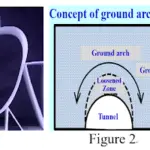Water treatment is an important component of civil engineering and plays an important role in providing clean and safe water for all applications.One of the revolutionary advances in this field was the introduction of sludge dewatering devices, which significantly changed the management and treatment of wastewater.In this article, we will explore the importance of water treatment in civil engineering, the challenges associated with sludge management, and how sludge dewatering machines are revolutionizing the entire process.

The Significance of Water Treatment in Civil Engineering:
Water is a finite resource, and its proper management is crucial for sustaining life and supporting various industrial and domestic activities. Civil engineering, with its focus on designing and implementing infrastructure, plays a vital role in ensuring that water resources are effectively utilized and protected. Water treatment is an integral part of civil engineering as it involves processes that purify water, making it safe for consumption, irrigation, and industrial use.
Traditional water treatment processes include several procedures: mixing, coagulation, sedimentation, filtration and disinfection.However, an often-overlooked aspect of water treatment is the generation of sludge, a byproduct containing solid particles and impurities removed during the treatment process.Handling and disposing of such sludge is a big challenge faced by civil engineers.
Challenges in Sludge Management:
The disposal of sludge generated during water treatment has historically posed environmental and logistical challenges. Traditional methods involved transporting and dumping sludge in landfills, which not only contributes to environmental pollution but also requires significant transportation costs.In addition, the large amount of mud produced put pressure on the existing waste management infrastructure.
Furthermore, the sludge itself is rich in water content, making it heavy and challenging to handle. The presence of water in sludge not only adds to transportation costs but also raises concerns about leachate and potential groundwater contamination. Therefore, finding efficient ways to manage and reduce the volume of sludge has been a persistent concern in the field of water treatment.
Revolutionizing Sludge Management with Dewatering Machines:
Sludge dewatering machines have emerged as a game-changer in addressing the challenges associated with sludge management. These machines utilize advanced technology to separate water from sludge, significantly reducing its volume and weight. Dry mud is advantageous for processing, transporting and disposing of materials generated.
There are a variety of sludge dryers including belt filters, centrifugal separators, and helical filters. Each type employs a different mechanism to achieve dewatering, catering to different scales of water treatment facilities and specific sludge characteristics. The common goal is to extract as much water as possible, leaving behind a drier and more manageable sludge cake.
More info about the sludge dewatering machine, please check this – Water Treatment Solutions
Benefits of Sludge Dewatering Machines:
- Reduced Volume and Weight:
- The primary advantage of sludge dewatering machines is the substantial reduction in both volume and weight of the sludge. This not only simplifies the logistics of sludge disposal but also minimizes the environmental impact associated with transportation and landfilling.
- Cost Efficiency:
- Dewatering machines contribute to cost efficiency by lowering transportation costs and reducing the need for expansive sludge disposal sites. Using these machines, the overall operating costs of a water treatment plant can be significantly optimized.
- Environmental Sustainability:
- The dryer helps with the overall sustainability of the water treatment process by minimizing the environmental impact of sludge disposal. The reduced reliance on landfills and the potential for recycling treated sludge for beneficial purposes further enhance the environmental credentials of these machines.
- Improved Compliance:
- Compliance with environmental standards and norms is a key responsibility of water treatment plants.Sludge dewatering machines assist in achieving compliance by facilitating the proper management and disposal of sludge in accordance with regulatory requirements.
- Versatility:
- Dewatering machines are versatile and can be integrated into existing water treatment facilities with relative ease. They can adapt to varying sludge compositions and treatment volumes, making them suitable for a wide range of applications.
Case Studies and Success Stories:
Several water treatment facilities worldwide have successfully implemented sludge dewatering machines, showcasing their effectiveness in real-world scenarios. Case studies demonstrate how these machines have not only improved the efficiency of sludge management but also enhanced the overall performance of water treatment plants.
Like Us on Facebook!
For instance, a water treatment plant in [City X] implemented a state-of-the-art centrifuge dewatering system, resulting in a significant reduction in sludge volume. The plant reported a considerable decrease in operational costs and a more sustainable approach to sludge disposal, aligning with the city’s environmental goals.
Subscribe Us on YouTube!
In conclusion, the revolutionization of water treatment in civil engineering through the incorporation of sludge dewatering machines represents a significant leap forward in the quest for sustainable and efficient water management. These machines address the longstanding challenges associated with sludge disposal, offering cost-effective and environmentally friendly solutions.
As technology continues to advance, it is anticipated that further innovations in sludge dewatering machines will emerge, providing even more sophisticated and tailored solutions for the diverse needs of water treatment facilities. The integration of these machines into standard practices ensures that civil engineering continues to evolve in tandem with the growing demand for clean and accessible water resources, securing a more sustainable future for generations to come.














